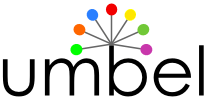 KBpedia is a More than Capable Successor
KBpedia is a More than Capable Successor
After nearly a dozen years of active service, we are retiring UMBEL (Upper Mapping and Binding Exchange Layer) at the end of the year. UMBEL was one of the first knowledge graphs designed to help disparate content interoperate on the Internet. It was based on the (also now-retired) OpenCyc version of the Cyc knowledge structure. Its development and use heavily influenced and informed the KBpedia knowledge graph, an improved successor designed to also support machine learning and knowledge-based artificial intelligence, or KBAI.
As of this announcement, all further development on UMBEL has ceased. It will be formally retired on December 31, 2019.
While Fred Giasson and I are ceasing our roles as editors of UMBEL and are ending our support of its Web sites and code, we would also be pleased to transfer any rights to the system, including UMBEL’s Web addresses and intellectual property, to any entity that is willing to keep these resources active. There may be users that may want to see the continuation of the system for their own purposes. The specific resources available are:
- Current and past versions of the knowledge graph
- Web sites:
- http://umbel.org/
- http://techwiki.umbel.org/index.php/Main_Page
- Google discussion forum
- LinkedIn UMBEL group
- GitHub UMBEL project site.
Realistically, with the emergence of KBpedia, we do not anticipate these resources to be in demand; nonetheless, we would be pleased to discuss transfer of these assets. Please contact me directly if you are interested.
UMBEL has been a great source of learning and a basis for many of our customer engagements over the past decade. UMBEL helped point us the way to ‘super types‘, the importance of disjointedness, the essential need for broad alternative labels (‘semsets‘), and the importance of a modular architecture and typologies. It is with much friendship and thanks that we bid adieu to UMBEL and its users and customers.





